9 Cheapest Places to Live in Italy in 2024
Written by Nadia Podrabinek
Hello, my name is Nadia. I usually write about traveling (there are so many places to fit all the lifestyles), relocation, and living in a foreign country (adapting to a different culture). My travels stretch beyond Spain, with journeys to the US, Italy, Norway, Portugal, and France. Relocating to Spain in 2018, I lived in cities from Barcelona to Madrid, currently calling Valencia home. Follow me on Twitter, Facebook, Instagram, or LinkedIn! ... show more
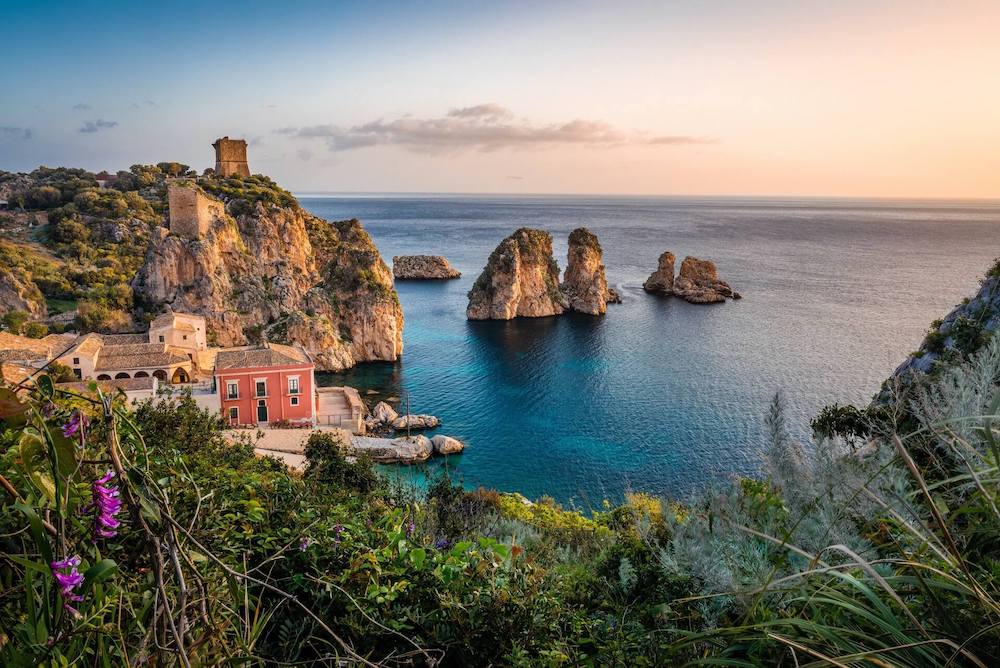
Italy is one of the most incredible countries in the world, where you can live comfortably on $1,000 per month (or at least close to that).
There is so much cultural, natural, and culinary beauty in Italy! The weather is warm in the Summer and mild in the Winter, and the people are friendly and welcoming. Italy also has many beautiful cities such as Rome, Florence, Milan, Venice, and other vibrant towns across the Italian Peninsula.
Key takeaways
- Cheapest cities in Italy: Padova, Palermo, and Bari.
- The healthcare system is widely available and affordable.
- Groceries and eating out could be as low as $300/month.
- Italy is just beautiful even though there is some bureaucracy.
| City | Expat costs / month | Family costs / month | 1 br studio / month | Dinner | Beer | Cappuccino |
|---|---|---|---|---|---|---|
| Padova | $1473 | $2,701 | $546 | $5,8 | $4,64 | $1,58 |
| Palermo | $1,683 | $2,175 | $516 | $11 | $3,04 | $1,53 |
| Bari | $1,788 | $2,463 | $430 | $6 | $2,11 | $1,41 |
| Bologna | $1,823 | $2,733 | $633 | $7,89 | $2,64 | $1,76 |
| Pisa | $1,994 | $3,283 | $632 | $6,85 | $3,43 | $2,20 |
| Naples | $2,658 | $4,195 | $843 | $16 | $6 | $1,21 |
| Milan | $2,724 | $4,755 | $1,054 | $17 | $5,8 | $1,53 |
| Florence | $2,784 | $3,585 | $738 | $13 | $6,33 | $1,16 |
| Rome | $3,164 | $5,223 | $1,265 | $16 | $5,8 | $1,05 |
The cost of living in Italy
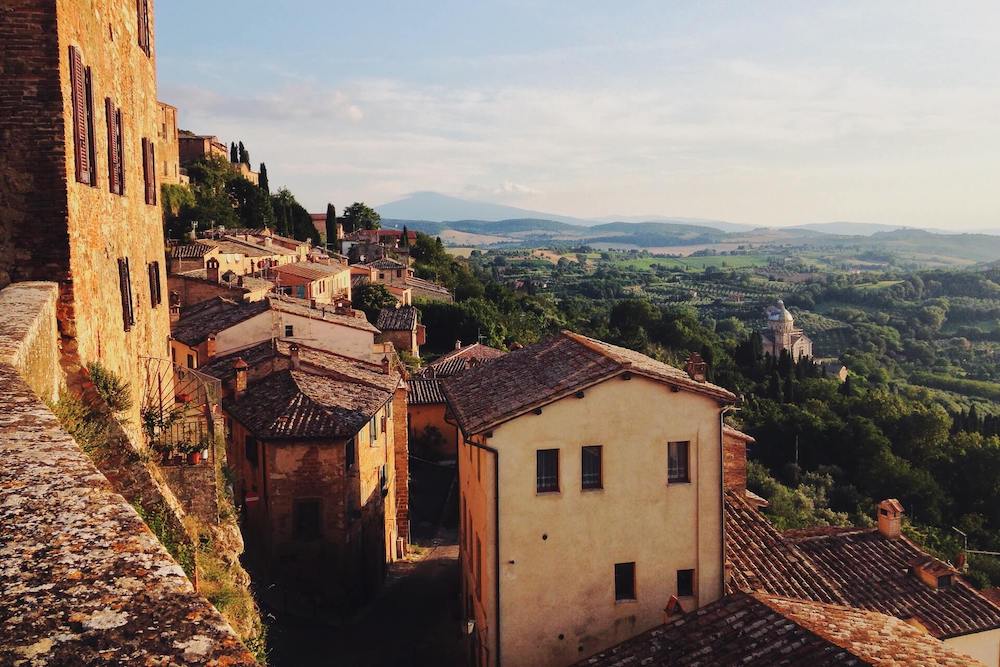
The overall cost of living in Italy is lower than in the US and northern European countries, and it is an affordable location that offers a high quality of life for what you pay. In extreme cases, it is possible to buy a house in Italy for the cost of buying a car.
There are several perspectives on where to live affordably in Italy.
The first perspective is just a statistical one, and you can surely find some of the cheap places to live in Italy (e.g., near Bologna, Trento, Palermo, and Bolzano), according to property listings on Idealista and Numbeo price stats.
- * According to NomadList and Numbeo data.
Pick some well-known places such as Milan, Rome, etc., and live in less-known neighborhoods or nearby cities which fit your budget and are easily accessible by public transportation. It is possible, take my word for it!
The top three most expensive and well-known locations in Italy are:
- Milan
- Rome
- Florence
Milan and Monza
Milan is an expensive and bustling city. It is beautiful in the center with leafy and expansive parks, but it is also very crowded, noisy, and chaotic with the hustle and bustle common to all metropolitan areas.
Milan has many business opportunities, shopping, dining, entertainment, residential infrastructure and services, as well as efficient public transportation. However, the cost of living comes at a high price. Expect to pay $800-$1,100 a month for a one-bedroom apartment in the city center, not to mention other expenses.
For a retiree, living long-term in Milan might not be the best experience, and they will likely want to be outside the city in a quieter location.
The cheap and comfortable alternative to living in Milan can be in the northern or northeastern part of the province, toward the cities of Varese or Monza. The price for a two-bedroom apartment starts at $640 per month in Monza. With a relatively easy commute, you can still work or study in Milan.
Useful Video
Rome and Viterbo
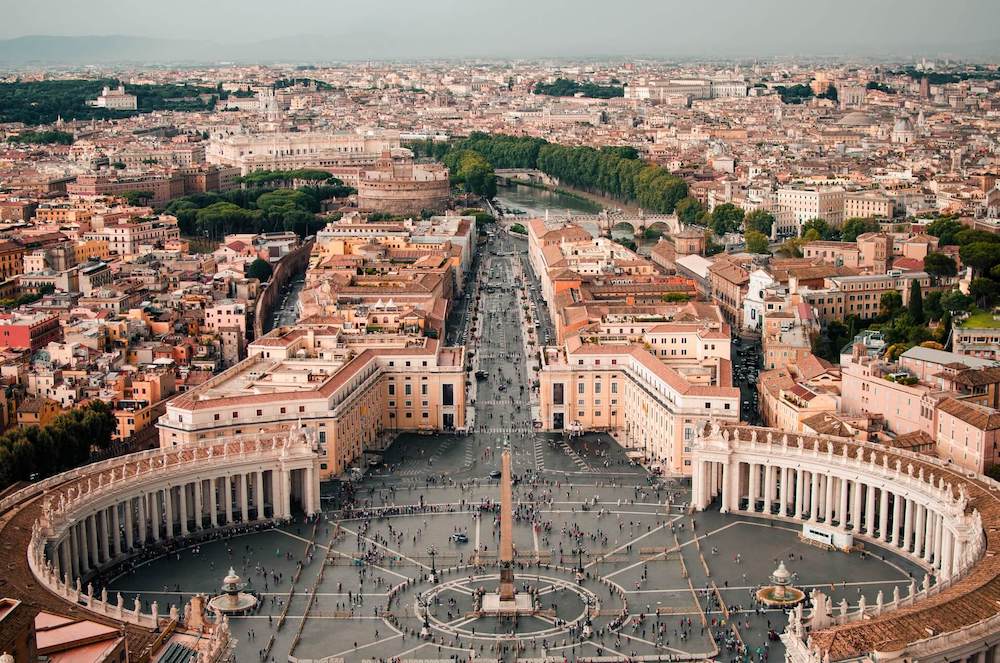
Rome is another city in Italy that is extremely expensive. If you are looking for a 600 square-foot apartment in the center of Rome, it would cost, on average, about $1,200 per month.
If you go an hour outside of Rome to the city of Viterbo, a really beautiful overlooked town on a hill with medieval towers, many cultural events, and a friendly atmosphere, the same apartment will cost you $450 per month. And it will be a furnished apartment in the city center.
Florence and Pisa
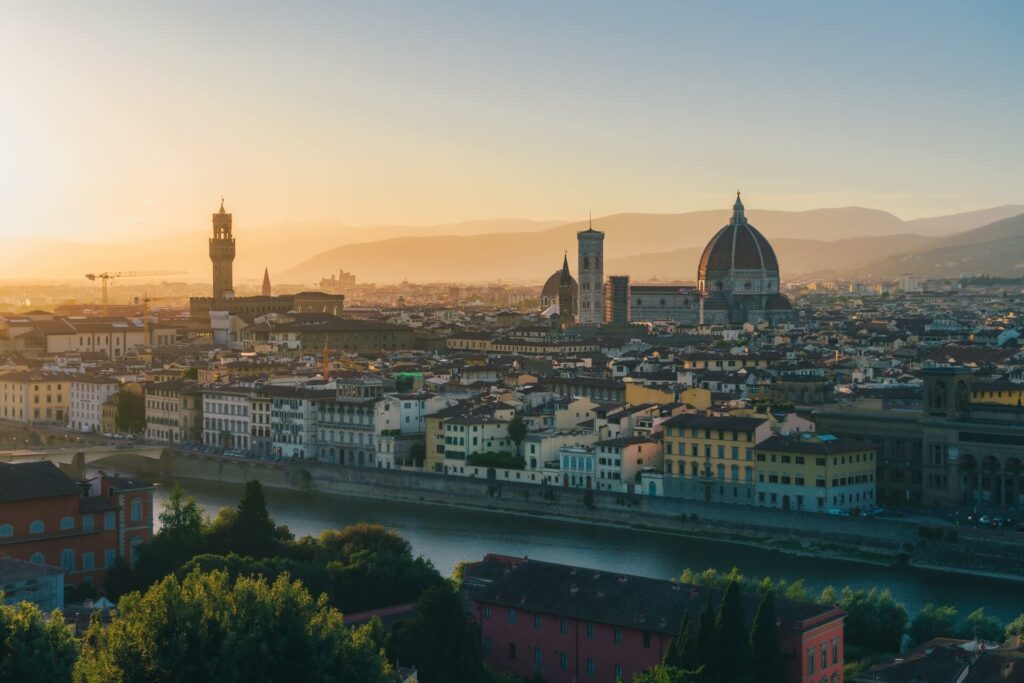
Tuscany certainly draws a lot of tourist attention and can be very expensive. If you are going to live in Tuscany, anywhere between Florence and Siena, it will be very expensive.
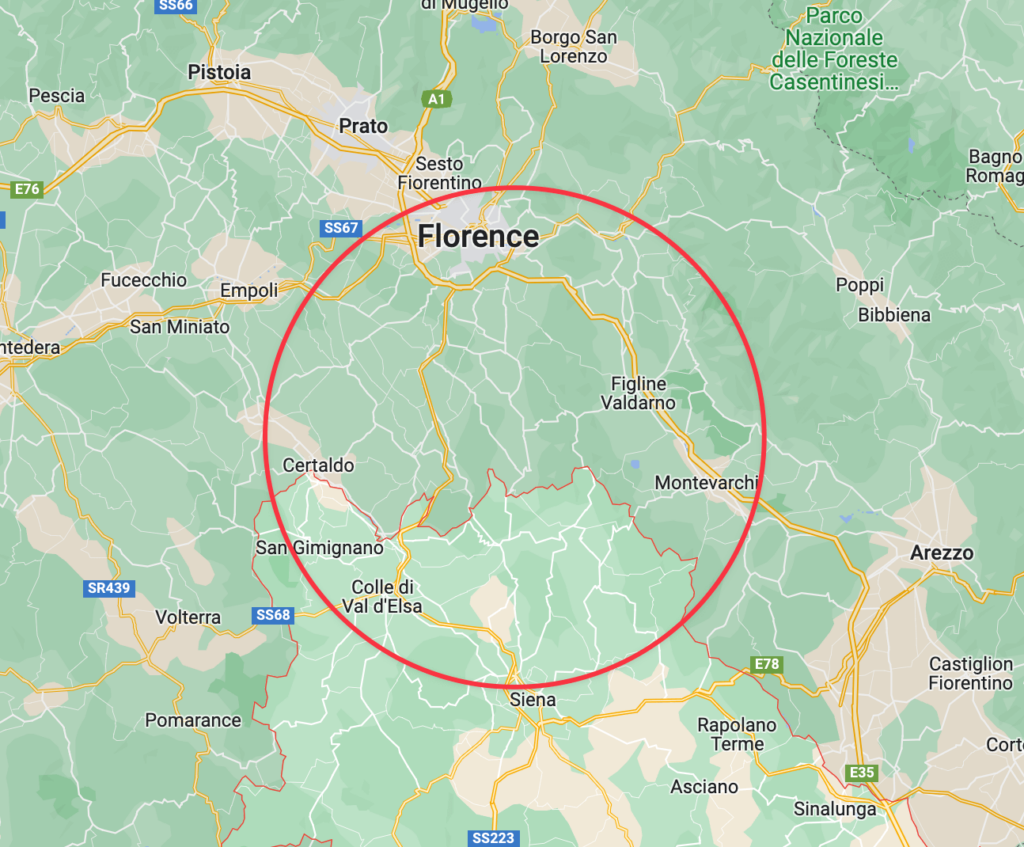
However, if you go to the peripheral area outside those main tourist attractions, you can actually afford to live even in Tuscany.
Pisa
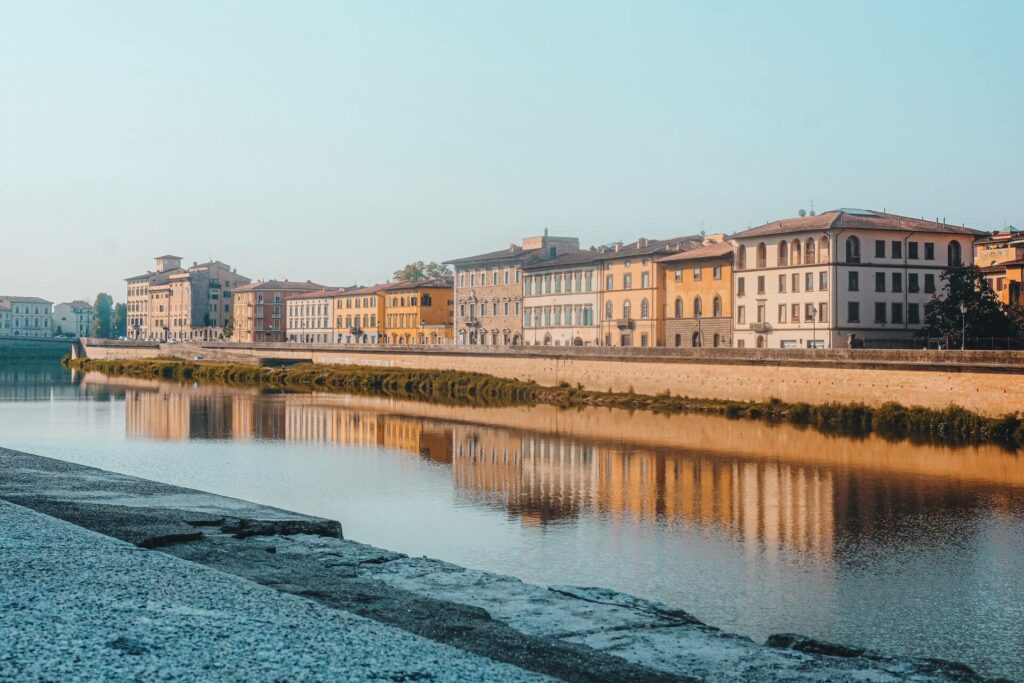
Many people think Pisa is expensive because it attracts a lot of tourists. However, the Leaning Tower of Pisa is on the edge of the town, and many tourists do not go to the city center.
Pisa is a thriving city with a renowned university, excellent healthcare (it is one of the best cities for healthcare in Italy), and everything is extremely affordable there.
Pisa is also very similar to Florence in terms of ambiance, and like Florence, is located along the Arno River.
A short comparison on property prices:
- Florence: $520 per square foot.
- Pisa: $305 per square foot.
As you can see, there is quite a difference. And you can find a fully-furnished house in the center of Pisa for $600 per month. Basically, in Pisa, you can pay half what you would in Florence.
Puglia region
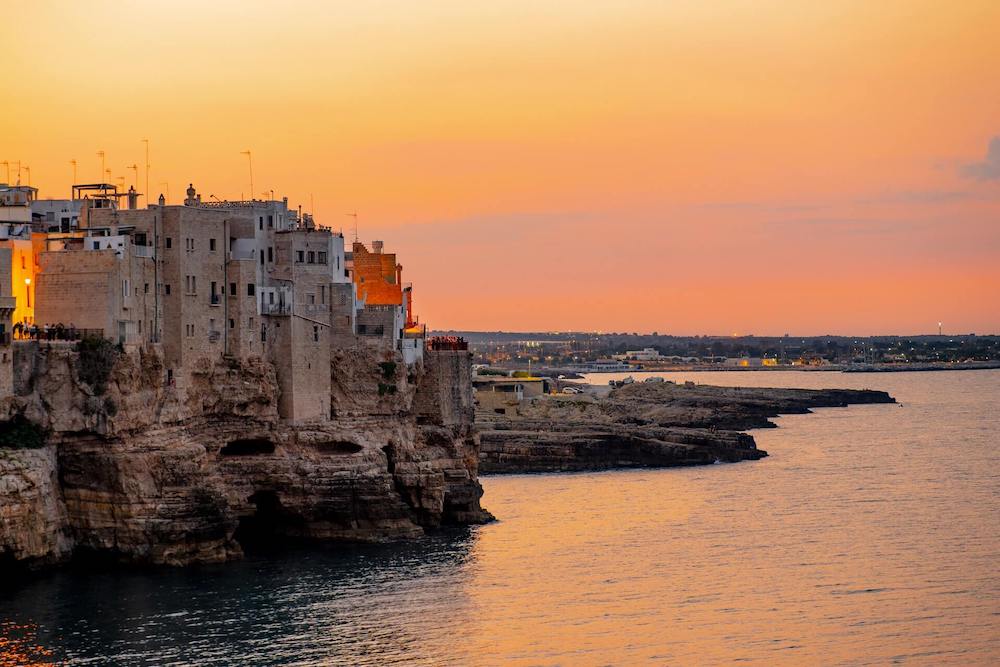
If you are looking for a mild climate and authentic lifestyle with friendly and active people around you, with excellent food, the province of Puglia is a great option. It is close to the sea, with access to the Ionic coast and the Adriatic coast, so you can easily walk to the beach.
If you do not like towns on a hill, there are some inland plateau towns in the region as well: Lecce and Martina Franca.
On average, the rental cost is $450-$800 per month for a cozy and furnished apartment in the city center, with your neighborhood coffee bar right outside your door, along with a wide selection of restaurants within walking distance.
Umbria region
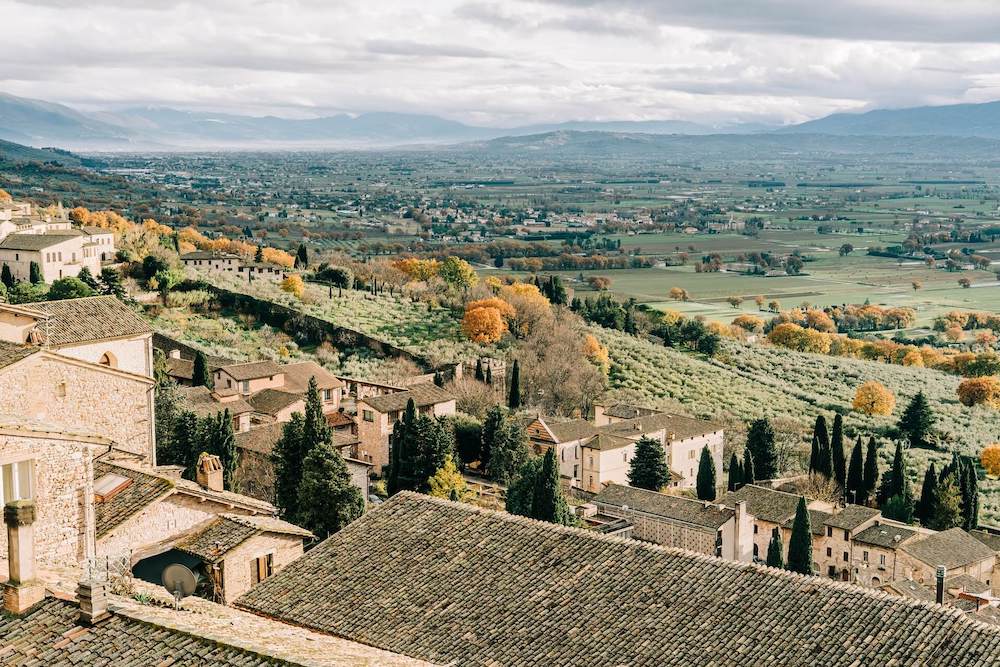
It is the geographic center of Italy, located between Rome and Florence. It is a great rural, hill town atmosphere that many expats are looking for, with some antiquity, old stones, and quaint buildings in the city center.
Rental properties can be had at bargain prices in Umbria, about $400-$600 per month.
To give you another comparison, a 120 square-meter (or 1,300 square-foot) two-story townhouse with two bedrooms and two baths sells for $150,000 in 2024.
Padova (Padua)
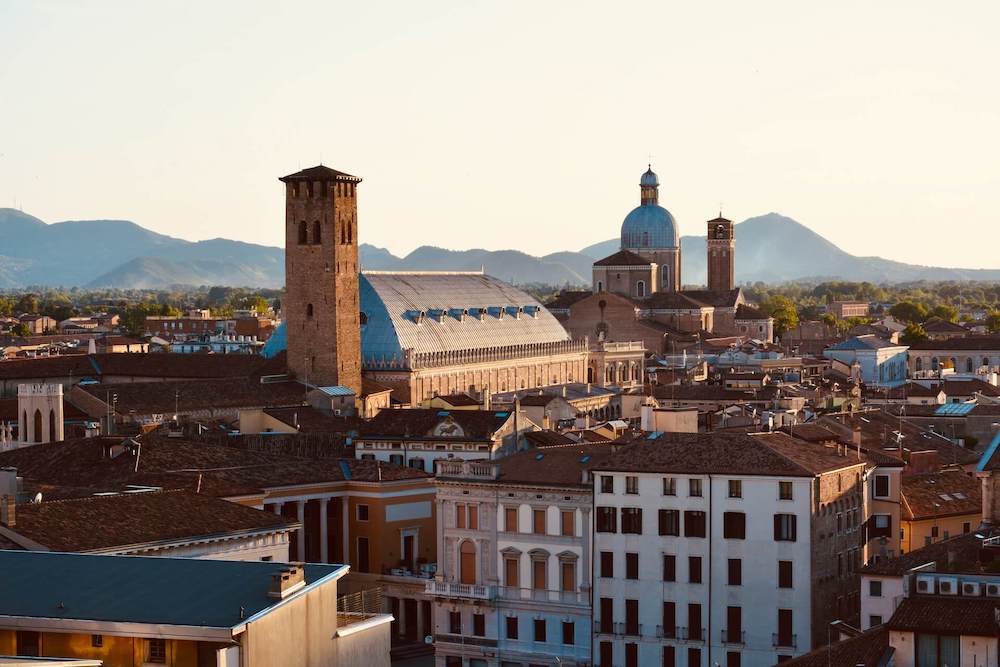
Padova is a perfect spot for long-term living and is the cheapest place to live in Italy (assuming you still want to live in some urban area).
You can find this relatively small town in the north-eastern part of Italy, about 24 miles west of Venice.
Padova is also connected by train and bus to Venice and Milan and has a small airport with short flights to Rome.
The cost of living in Padova is the lowest compared to the places previously mentioned in this article, so it can be a solid choice to start your life in Italy on a budget.
Torino (Turin)
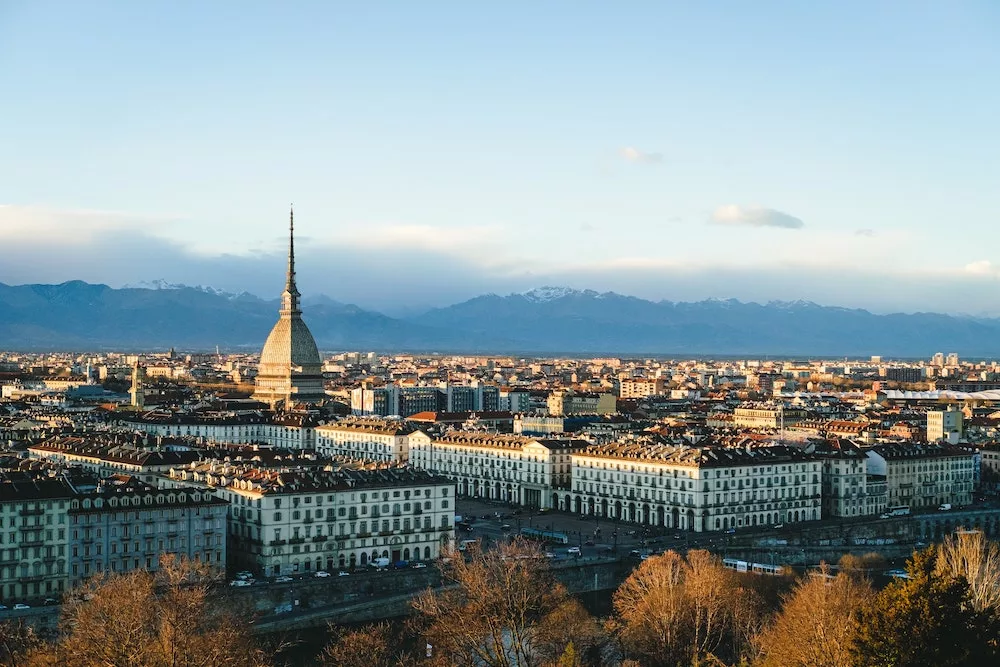
It is also one of the cheapest Italian cities.
There is no need for a car in Torino, as public transportation is sufficient. Walking or cycling are viable options if you live near the center.
Rents are much cheaper than in cities like Milan or Rome, and you still get the benefits of living in a large city with museums, concerts, festivals, etc.
Some downsides: air pollution remains an issue across the region, including more traffic within the city.
Instagram Review
A short summary of the expenses in Italy
Property taxes
Property taxes in Italy at large are very affordable. If you are paying $4,000 a year in the US, you will pay somewhere around $200-$400 a year in Italy.
Public transport
You can take an inexpensive bus ride for $1,50. On the other hand, tickets for the regional trains are not sold at bargain prices.
Cell phone plans
You can have a $15 plan with 300 minutes for international calls, unlimited local calls and 2-4 GB of data, and high-speed internet at your apartment for $30-$40.
Grocery bills

You can spend as low as $300 a month on groceries for two people and still have prosciutto di parma and other tasty delicacies. Quality wine can run as low as $3-$4 a bottle.
Eating out
There are many great deals at restaurants all around Italy. You can get a fixed price menu with meals between $12 and $17, which usually includes a glass of wine and coffee at the end. You can go for a pizza and beer, which should be around $10 per person.
Healthcare
Healthcare is a huge advantage in Italy, and it is so much more affordable compared to the US healthcare system. Enrollment in the Italian healthcare system costs around $400. It covers visits to a doctor, emergency care, hospitalizations, and most surgeries.
Some extra procedures which are not covered (e.g. MRI), may cost an additional $40.
Private health insurance is also available; it usually runs between $1,400-$2,200 per year and allows you to see private specialists or use private hospitals, which are not a part of the main public health plan.
Leisure time
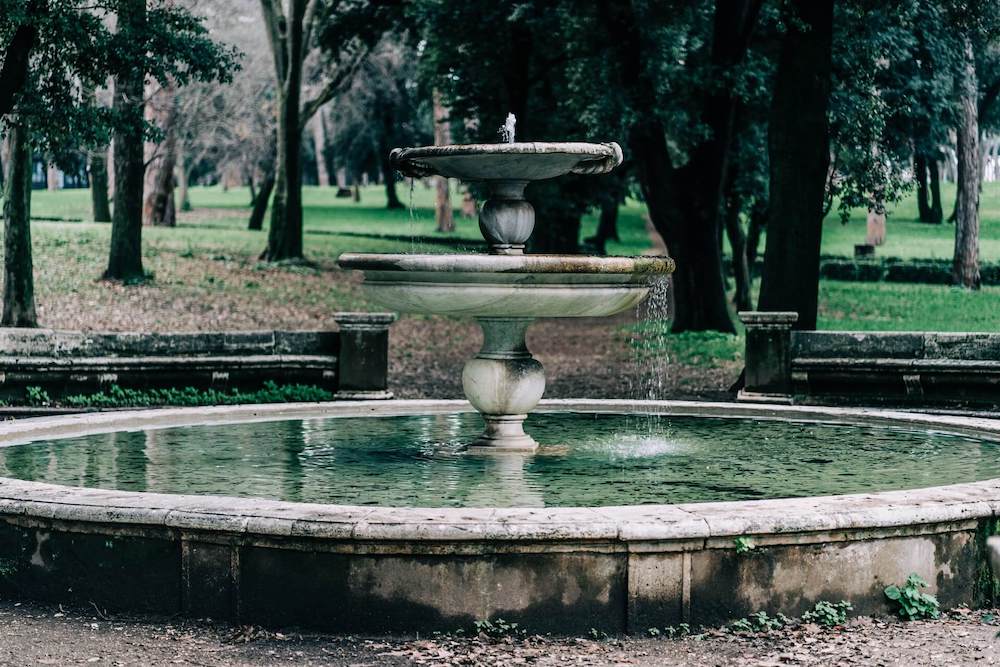
Festivals are free in Italy, and you pay only for the things you consume. If you are attending cultural events, Italy’s most popular museums are still great bargains. Villa Borghese in Rome is $12 per person to enter, and the world’s most renowned masterpieces are on display there.

The same is the case for the Uffizi Gallery in Florence – it is $19 to see some of the world’s most renowned art by the most influential artists. You can also go to the opera, and the entrance fee is between $19-24 for the Baths of Caracalla in Rome.
The only sad thing is that many museums have minimized or even canceled their discount programs.
The negatives
There is no perfect place in the world, and Italy is no exception. There are negative aspects, for sure. For example, corruption and bureaucracy are real obstacles to overcome and sometimes you have to exert yourself to achieve your goals.
What people say on Reddit
I strongly recommend Tuscany except Florence, unless money isn’t an issue, just because their accent is the nearest to the official Italian language. Also have a look at Bologna if you’re looking for a vibrant cultural scene, or you can go up north in smaller but rich cities not far from Milan such as Bergamo, Verona, Torino, etc. Mind that the northern flat territory is probably the most polluted area of EU, air quality can be very rough especially around the axis the A4 highway.
unnccaassoo
Naples is anything but stereotypical. Watch your wallet and stay away from large groups of younger people. Napoli is the most densely crowded city in Europe and it feels that way when you’re there. Don’t flash your bling and go with the flow and you’ll be cool. On the Amalfi Coast I strongly recommend Aqua Pazza in Cetara. It’s fine but a playful fine dining experience.
hypomyces
My husband and I are moving from the USA to Florence in a month. Florence is an incredible city — friendly people, beautiful scenery, so much culture and history, fantastic food. It’s also very central and a quick train ride to Milan, Venice, and Rome if you felt like getting out of the city for a day or two. I looked at hundreds of apartments online before I found ours, and there are a ton of affordable (less than 1000€) options in all parts of the city. It’s impossible to not fall in love with Florence.
HerodotusProtagonist
Maybe try the shoulder season? I’m not sure what the prices are like now, but I’m finishing a three month stay in Italy this month. I’ve paid about $1500 a month for my AirBnBs in Rome and Florence, both in pretty good neighborhoods easy walking distance to the center. Rome was March and Florence is late April to end of May. Summer is probably ramping up the prices and also the heat! Spring has been absolutely lovely though. Fall would probably be good too.
PrinnySquad
Final thoughts
Italy is an ideal country in terms of food, nature, history, and special experiences. Many of us think we cannot afford to live in Italy on a budget, which is wrong! It is only a matter of courage and personal interest.

Remember, you are doing things that are out of the ordinary: living in a foreign country, making it work, potentially finding a job, and making a real life for yourself and loved ones. It is not what ordinary people do, and it is undoubtedly harder, but absolutely achievable, nonetheless.
I hope this article has been helpful and informative, and you now see that Italy is a really affordable and beautiful place to live. It only comes to your preferences when choosing the cheapest city in Italy. Let me know what you think, and leave your comment below!
My Other Posts About Italy
- Does It Snow in Italy? ❄️
- Is there Uber in Italy? 🚗
- Best Books About Italy For Travelers 📗
- Tips for Driving in Italy 🚦

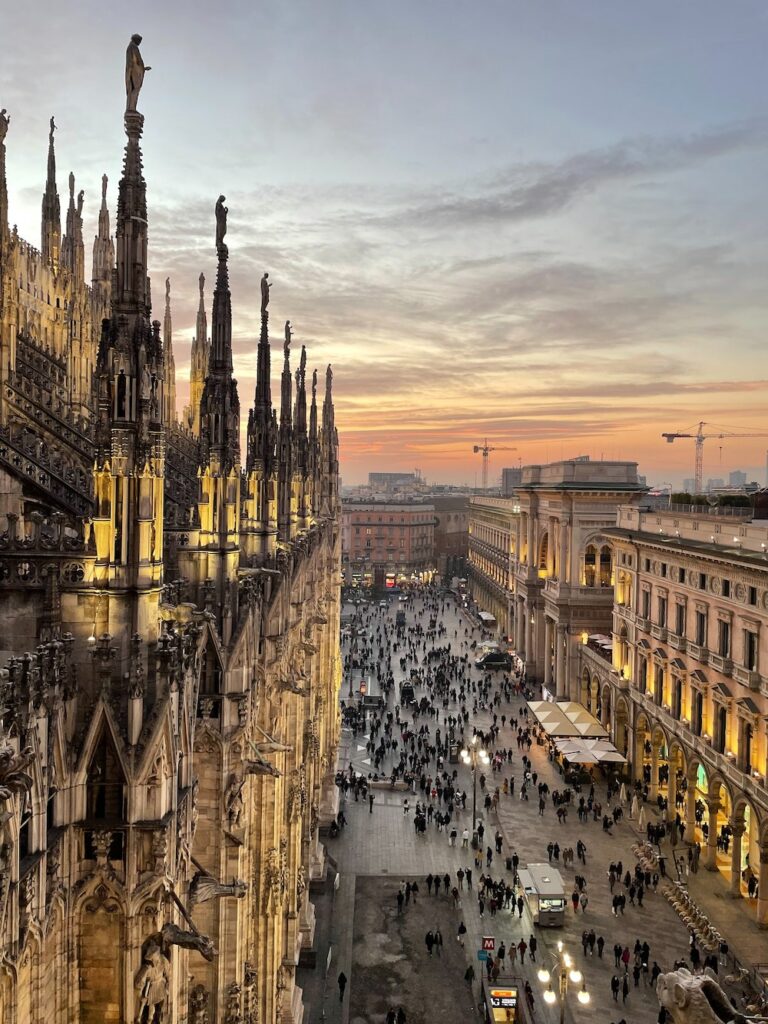
22 replies on “9 Cheapest Places to Live in Italy in 2024”
Hi, Nadia! Could you, please, tell me if you can live in Italy just speaking English?
Nadia,
Wow!! Your article has got me starting to do more research. I’m really wanting to make a life change and will be doing this as a single female during the mid point of my life. What are your thoughts on a single female moving from the states to one of the areas you mentioned and what is the probability of finding a small job to supplement a few expenses? can I work as a non-citizen with a permit of sort? Is finding Healthcare an issues?
As I said, I’m building information to make a move in about a year and really appreciate any additional input you may offer.
I am interested in a six month rental in Italy.
Hi Nadia, your article is a big help for us (non-European) to learn more about Italy. I am retired and wanted to explore or live in affordable city of Italy for 6 months. My question to you is. Do I need to secure a visa in order to stay legal in Italy for 6 months? I thank you in advance.
Hi Arlene,
I’m thrilled to hear you found my article helpful!
As for your question, the need for a visa largely depends on your nationality. If you’re from a non-European Union country, then you will likely need to apply for a long-term visa, also known as a “National” or “D” visa, for stays longer than 90 days. This includes citizens from the United States, Canada, Australia, and many others.
Before you start planning your six-month stay, I recommend checking with the nearest Italian consulate or embassy in your home country to understand the requirements. They will provide you with the most accurate and up-to-date information. Also, you may need to provide proof of financial sustainability, health insurance, and the reason for your stay.
Safe travels,
Nadia
Hello Nadia, Thank you for this wonderful write-up. It is very educative. I’ll be traveling to Padua soon as a student, and it will be nice to know how much I budget monthly and what I should expect. Thank you
So I live in 2500 sq ft home, on 1/3 acre in a quiet neighborhood in Santa Fe, NM.
Currently valued at about $650,000. What should I expect to spend in maybe Marche or another area close to the beaches on the east side of Italy. Generally I prefer the mid to southern regions. I believe my family goes back to the 16 century in Teramo. My Grandpa cane to NY from Napoli.
Thank You!
Hey there , I loved reading this article . Personal thought , I’m a 19 year old and I’m gonna be moving from and Eu country to Italy. I was more focusing on buying a house then renting as it’s much more worth it – as I see it . I’m still searching for keeping the same profession and work as I loved that , but I will be definitely loving . Love Italy
Hi,
You have given so much insight on where to start and where to look to live in Italy.
My husband and I are planning to live in Italy for 6-12 months.
I love your tips for rental properties and how to work this. Can you give any advise about train travel around Italy and to other countries?
Is there a train pass we can purchase so that we can save money?
Thanks for any help
Net
Hi, Net! Traveling by train is a whole topic. Here is what I’d suggest:
If you plan to travel extensively within Italy and to neighboring countries, consider purchasing a rail pass.
The most popular options are:
Interrail Pass: For European residents, the Interrail Pass allows unlimited train travel within 33 European countries, including Italy. Passes are available in various durations and options, including continuous or flexi passes (a certain number of travel days within a month).
Eurail Pass: Similar to the Interrail Pass but for non-European residents, the Eurail Pass offers unlimited train travel within a selected number of countries or across Europe, with different pass options to suit your needs.
Discount cards: Trenitalia offers discount cards like the “CartaFRECCIA” program, which provides discounts on high-speed train tickets. Registering for such programs could save you money on train travel within Italy.
As of traveling to neighboring countries (could be France, Switzerland, Austria), you can start from cities like Milan, Venice, and Rome. They all have direct train connections to Paris, Zurich, and Vienna, respectively.
Nadia, thank you for this helpful post!! We have been to Italy and fell in love with the country. We stayed in Tuscany. Thank you for giving us other options in that area that are not as expensive. Can you suggest some towns near
Genoa or near the Italian Riviera?
I’m glad to hear you enjoyed your stay in Italy! The Italian Riviera and the area around Genoa offer plenty of beautiful towns, including Portofino (beautiful harbor), Camogli (with rich seafaring history), Cinque Terre (no introduction needed, I guess), Sestri Levante (two beautiful bays), Noli (medieval village), and Lerici (with a beautiful castle).
My sister and I are seniors from America. we’re on a fixed income. We would like to stay in Italy for six months we’re looking for a two bedroom two bath. Short walking distance to shops and restaurants. In small village with easy access to public transportation.
I’ve been to Tuscany never knew there were so many other options. I’m retired and want peace and quiet but also I love activities, music, etc. Thank you for this article. It is something to think about.
I too am happy I found your article. I’ve been to Italy only once but it has been my favorite . I’ve considered it as a possible retirement location too. The US has left me unhappy.
Ciao Nadia, sonó di una provincia di napoli , vivo in USA
I must say that a very good article, covering all the areas. Guiding the newcomers with numbers and information. Planning to move to Italy for study purposes
Nadia, thank you! Your articles on Italy and Spain provided me with valuable insights and data. My husband and I are looking to spend 6 months to a year in Europe working remotely in Italy and Spain are at the top of our list for our home base. A challenge I consistently face when researching long term available rentals is that airbnb properties always seem to be at the top of the search engine results, which I feel are priced at the top of the market. I am struggling to find local/regional home/apt rental agencies or sources. Do you have any recommendations for searching available long term rentals in Italy and Spain? Gracias/Grazie!
Hi Dawn!
The best way to find a long-term rental:
1. Come to the desired country, Spain or Italy
2. Rent an apartment via Airbnb for a couple of weeks
3. Start searching for some cheaper long-term options.
The thing is that these days the market is over heated, with many people coming from Ukraine and other countries. So it may take a while before you find a suitable rental property.
For long-term apartment rentals in Spain, you may want to check out websites such as Idealista (www.idealista.com), Fotocasa (www.fotocasa.es), and Habitaclia (www.habitaclia.com).
For long-term apartment rentals in Italy, you may want to check out websites such as Casa.it (www.casa.it), Subito (www.subito.it), and Immobiliare.it (www.immobiliare.it).
Nadia,
Thanks for the quick response, great advice (totally makes sense) and housing rental sources!
Best,
Dawn
Nadia this article is so informative and very encouraging. I recently went to Italy and lived for three months and now want to return and live there long term and have been reading anything I can about ways to make that possible and the information you have provided gives me hope. Than You.
Thank you for your kind words, April! I am glad the post was helpful. And good luck on your journey!